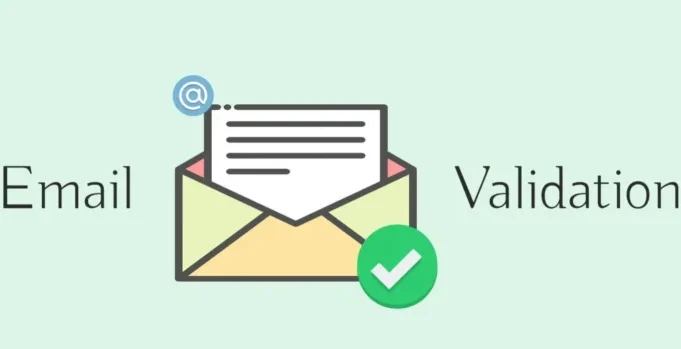Email marketing remains an indispensable tool in the ever-evolving digital landscape. With its power to reach thousands, even millions, in just a click, it’s no wonder that it sits at the heart of the modern marketer’s toolkit. But as the old saying goes, with great power comes great responsibility. This is not just about crafting compelling content; it’s about maintaining email list hygiene.
Every marketer, regardless of industry or target audience, faces challenges related to their electronic mail lists. These challenges encompass issues like bounces, low engagement rates, and poor deliverability. One vital, often underrated, solution to these challenges? The process of email verification.
Understanding Email Verification
At its core, email verification is the systematic process of confirming the legitimacy and deliverability of email addresses. It’s not just a technical process; it’s about building trust. When we say it checks whether an electronic mail address exists, we mean it ensures there’s a real person behind it. When we ascertain that it’s active, we’re saying the user frequently checks it. And when we verify its ability to receive electronic mail, we’re ensuring no technical barriers hinder our communication.
Email verification isn’t merely about ticking off administrative checkboxes. It goes deeper. It’s about ensuring the authenticity of your recipients. By methodically excluding invalid or dubious addresses from your list, you’re ensuring that your carefully crafted messages find their intended recipients, reducing wastage, and substantially enhancing engagement.
The Impact of Invalid Emails

Source: mailercheck.com
Imagine carefully writing a letter, putting it in an envelope, and then realizing you’re sending it to a long-abandoned home. That’s what sending electronic mail to invalid addresses feels like. It’s not only wasteful in terms of resources, but it’s also emotionally draining.
But the implications go far beyond wasted effort. It has the potential to harm your professional reputation. Internet Service Providers (ISPs) continuously monitor email bounce rates, which indicate the percentage of emails that weren’t delivered.
A high number of bounces, especially in a short timeframe, can quickly label you as a spammer, grievously harming your deliverability rates. Beyond just the tarnished reputation, there’s another hidden pitfall. Invalid emails, when not addressed, can greatly distort campaign analytics.
This misrepresentation makes it exceedingly hard to judge the real effectiveness of your marketing efforts, leading to misguided strategies. This is why you need to immediately consider www.zerobounce.net and verify your email.
Email Verification vs. Email Validation
On the surface, the terms ’email verification’ and ’email validation’ might seem interchangeable. However, dig a little deeper, and the nuances become apparent. Email verification is a process that dives into the actual deliverability of an email. It looks at whether the mailbox not only exists but is also active and regularly accessed.
In contrast, email validation is more technical. It ensures the format of the electronic mail follows standards, the domain is legitimate, and other intricate details align with best practices.
While they sound similar, their areas of focus are distinct. Both, however, are of paramount importance to the savvy marketer: while verification ensures your emails find their way to a real person’s inbox, validation ensures you’re not mistakenly sending to a typo-filled or falsely structured domain.
Benefits of Using an Email Verifier

Source: medium.com
Integrating an email verifier into your marketing operations can prove to be a transformative decision. One key advantage is the improved deliverability. When your email list is populated solely with valid addresses, the chances of your messages successfully reaching their intended recipients skyrocket. Next, consider the reduction in bounce rates. Every marketer dreads the sight of a high bounce rate because it signifies wasted efforts.
With the non-existent electronic mail filtered out, your bounce rates plummet. Finally, there’s the matter of cost savings. While each sent email might seem negligible in cost, the aggregate expenses can be staggering, especially if a significant portion goes to invalid addresses. By verifying emails, you’re ensuring that every penny spent on electronic mail campaigns counts.
Enhancing Sender Reputation
In the vast ocean of email marketing, your sender reputation is the lighthouse guiding ISPs. A sterling reputation can be your strongest ally. It’s the culmination of consistent engagement metrics and minimal bounces. However, building this reputation isn’t merely about crafting compelling content; it begins with ensuring your e-envelopes are dispatched to valid addresses. When mail bounces or gets marked as spam, it’s a black mark against your name.
But with electronic mail verification, you effectively shield your reputation. ISPs recognize this diligence, resulting in higher deliverability rates as your emails find their rightful place in the recipients’ inboxes.
Avoiding Spam Traps and Blacklists
In the digital game of cat and mouse, spam traps are the cheese luring in the unsuspecting rodents. These email addresses, planted intentionally by ISPs and anti-spam entities, can be catastrophic for marketers. A single misstep, one email to a spam trap, and you’re branded, blacklisted.
This is where electronic mail verification emerges as the hero. By meticulously sieving through your list, it identifies and eliminates these perilous traps, ensuring your campaigns continue unimpeded. Remember, a single blacklist entry can cripple your marketing efforts, making verification not just beneficial, but crucial.
Compliance with Data Privacy Regulations

Source: itprotoday.com
The digital era brought with it a renewed emphasis on privacy. Regulatory frameworks like GDPR and CAN-SPAM didn’t merely alter email marketing; they redefined the landscape. Now, respecting user data isn’t just ethical, it’s mandatory. Opt-in consent isn’t a casual nod; it’s a binding contract. Electronic mail verification ensures you honor this agreement.
By confirming the authenticity of the addresses, you’re not just reducing the risk of unwanted communication but also safeguarding against potential legal repercussions. In essence, electronic mail verification is the bridge ensuring your marketing strategies align with global data protection mandates.
Reducing Costs and Improving ROI
Financial prudence is at the heart of effective marketing. If you were told that 10% of your advertising billboards were erected in deserted areas, would you continue paying for them? Similarly, why fund emails that fall into the abyss?
Electronic mail verification slashes these redundant costs. Furthermore, a purified list amplifies engagement. With more valid recipients, your content gets more eyeballs, leading to heightened interactions, conversions, and thus, a robust ROI. It’s simple math: better targeting equals better returns.
Choosing the Right Email Verifier

Source: abstractapi.com
Choosing an verifier is akin to picking a trusted ally. First and foremost, accuracy is non-negotiable. An electronic mail verifier that offers anything less than near-perfect accuracy is a liability. Then, there’s the matter of integration.
Your marketing ecosystem likely comprises various tools, from CRM systems to marketing automation platforms. The verifier should nestle seamlessly within this environment, facilitating easy data flow. Lastly, pricing plays an indispensable role. While cost-cutting shouldn’t be at the expense of quality, it’s essential to ensure you’re getting tangible value for every dollar spent.
Best Practices for Email Verification
Navigating the intricate corridors of email marketing requires a map, a set of best practices to guide your journey. At the forefront is regular cleansing. Periodic electronic mail verification, especially before significant campaigns, ensures you’re always on target.
Another pivotal strategy is the double opt-in. By asking subscribers to confirm their intent, you add an extra layer of verification, ensuring genuine interest. Lastly, always monitor bounce rates. These metrics serve as an early warning system. An unexpected surge often indicates underlying issues, signaling that it’s time to reverify your list.
Conclusion
For marketing sanity and unparalleled campaign effectiveness, email verification isn’t a choice—it’s a necessity. For marketers aiming for impactful campaigns, integrating email verification is paramount. Your electronic mail deserves to be read; ensure they find the right inbox!







